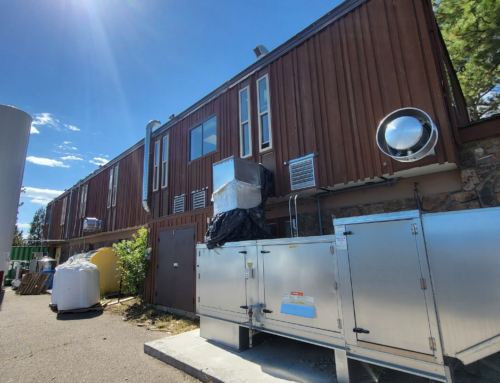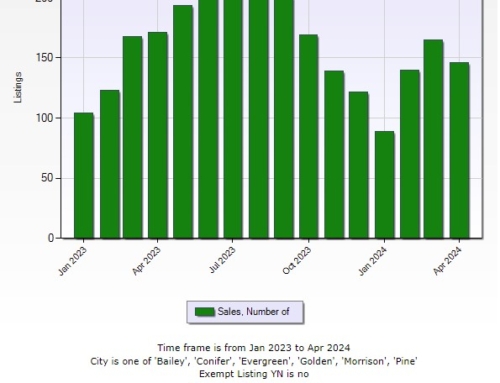
A Comprehensive Guide to Understanding the 2/1 Rate Buy Down for Mortgages
(*Disclamer: I am not a mortgage loan broker. This information is for general info purposes only)
Securing a mortgage can be a daunting task and the complex language and terminology associated with the process can make it even more confusing. The 2/1 rate buy down is a type of mortgage that is used to reduce a borrower’s initial interest rate for the first two years of their mortgage. With this comprehensive guide, you will gain a comprehensive understanding of the 2/1 rate buy down, from the benefits and drawbacks to how to use it to your advantage. Learn how to use this type of mortgage to reduce your interest rate and maximize your savings over the long-term. With this guide, you will be empowered to make well-informed decisions about your mortgage and secure the best deal for your financial future.
What is the 2/1 Rate Buy Down?
A 2/1 rate buy down is a type of mortgage that is used to reduce a borrower’s initial interest rate for the first two years of their mortgage. This is achieved by the lender agreeing to pay the difference between the current rate and the initial rate for the duration of the 2/1 rate buy down period. This means that a borrower can reduce their interest rate and monthly payments in the short-term. A 2/1 rate buy down is also known as a 2-year rate buy down. The 2/1 rate buy down is a great option for those who are struggling to secure financing at a reasonable interest rate. This option allows you to lower your monthly payments and may make you a more attractive borrower when securing financing. While the 2/1 rate buy down can be a great option, it is important to weigh the short-term benefits against the long-term benefits of a lower rate. In some cases, it is better to take the lower rate and pay extra each month, rather than have a slightly higher rate for the first two years.
Benefits and Drawbacks of a 2/1 Rate Buy Down
The 2/1 rate buy down has a number of benefits and drawbacks. A 2/1 rate buy down can help reduce a borrower’s initial interest rate for the first two years, which can help lower monthly payments and make them more affordable for the borrower. It can also make a borrower more attractive and make it easier to secure an initial loan, especially if the interest rate is high. However, a 2/1 rate buy down comes with certain risks. It can make it more difficult to refinance or sell the home since you are locked into a specific rate for two years. Borrowers should also consider the long-term implications of a lower initial rate. If a borrower decides to sell or refinance the home before two years are up, they will be responsible for paying the difference between the higher initial rate and their new rate.
How to Calculate a 2/1 Rate Buy Down
There are two ways to calculate a 2/1 rate buy down. The first is to determine the difference between the lender’s current rate and the initial rate. Once you have this information, add it to the borrower’s monthly payment. The difference between the initial rate and the new rate at the end of the two years is the amount that the lender will need to cover. A 2/1 rate buy down can also be calculated by determining the difference between the lender’s current rate and initial rate. Then, add the difference to the initial rate. The difference between the initial rate and the new rate at the end of the two years is the amount that the lender will need to cover.
Strategies to Maximize Your Savings with a 2/1 Rate Buy Down
There are a few strategies to maximize your savings with a 2/1 rate buy down. The first is to shop around for the best initial interest rate. While the initial interest rate is set by the lender, you have some control over the final rate. The initial interest rate is determined by the lender and the 2/1 rate buy down is an option that lenders use to secure a certain profit margin. The initial interest rate is typically higher than normal interest rates during a regular mortgage process. However, with a 2/1 rate buy down, the initial interest rate is less than the normal rate. This is beneficial for the borrower because they are able to get lower monthly payments with the 2/1 rate buy down. While there is no guarantee that your loan officer will offer you the same initial rate as the 2/1 rate buy down, shopping around and getting pre-approved for a mortgage is a great way to increase your chances of securing a lower initial rate.
How a 2/1 Rate Buy Down Compares to Other Mortgage Options
A 2/1 rate buy down is commonly compared with a permanent rate buy down and a 1/1 rate buy down. The permanent rate buy down is a similar option that locks in the interest rate for the duration of the mortgage. The 1/1 rate buy down has the same benefits as the 2/1 rate buy down, but for only one year. The 2/1 rate buy down can also be compared to refinancing or a rate change. When refinancing or choosing a rate change, you are able to secure a new interest rate after a certain period of time. However, a 2/1 rate buy down allows you to lock in a lower interest rate for the first two years. This can be a great option for those who are concerned about interest rates rising.
Preparing for the Closing Process
When preparing for the closing process, it is important to remember that a 2/1 rate buy down is a commitment between you and the lender. It is a legally binding contract, so make sure you are fully aware of all the terms and conditions before signing anything. When you are reviewing the terms, be sure to thoroughly review both the initial rate and the initial payment. This will give you an idea as to how much you will be paying per month. It is also a good idea to review the rate buy down terms. This will give you an idea of how much the lender will be paying per month to lower your rate. If you are uncertain about anything in the documents, ask your lender for clarification. It is important to be well-informed and comfortable with the terms of your contract before signing anything. Make sure you have a thorough understanding of the terms and conditions before committing to anything.
Who is Eligible for the 2/1 Rate Buy Down?
There are a number of factors that determine whether or not you are eligible for a 2/1 rate buy down. Your credit score, debt-to-income (DTI) ratio, and the type of mortgage you are seeking are all important factors that will determine whether or not a 2/1 rate buy down is available to you. A 2/1 rate buy down is a great option for those who are struggling to secure financing at a reasonable interest rate. This option allows you to lower your monthly payments and may make you a more attractive borrower when securing financing. While the 2/1 rate buy down can be a great option, it is important to weigh the short-term benefits against the long-term benefits of a lower rate. In some cases, it is better to take the lower rate and pay extra each month, rather than have a slightly higher rate for the first two years.
Tips for Maximizing the Benefits of the 2/1 Rate Buy Down
When maximizing the benefits of the 2/1 rate buy down, there are a few things that you can do to secure the best deal. When shopping around for a 2/1 rate buy down, it is important to review the initial rate and monthly payment for each lender. While the 2/1 rate buy down is a great option, it does come with certain risks and drawbacks. It can make it more difficult to refinance or sell the home since you are locked into a specific rate for two years. Borrowers should also consider the long-term implications of a lower initial rate. If a borrower decides to sell or refinance the home before two years are up, they will be responsible for paying the difference between the higher initial rate and their new rate.
Conclusion
The 2/1 rate buy down is a type of mortgage that is used to reduce a borrower’s interest rate for the first two years of their mortgage. This is achieved by the lender agreeing to pay the difference between the current rate and the initial rate for the duration of the 2/1 rate buy down period. This should be a consideration for all prospective homeowners. A 2/1 rate

Orson Hill Realty is a real estate company in Evergreen, Colorado that serves the Denver Foothills and the Denver Metro. Orson Hill Realty can assist in any size real estate transaction from small land listings to luxury listing agents and buyer brokers.
Orson Hill Realty has experienced listings agents and buyer agents. Our Realtors know how use high tech digital marketing mixed with old school marketing to sell your home faster and for more money.
This technology also helps buyers find their home faster. That way a buyer never misses the perfect home again. Any real estate agent in this day and age that doesn’t leverage technology is not doing their clients any favors. All Orson Hill Realty real estate agents are Realtors.
Orson Hill Realty is a full-service Colorado-based real estate company that offers professional real estate agents and brokers to assist you in your buying or selling process. Our agents are well-versed in the local community and have a strong online presence, making them highly effective in their field. For buyers, we offer online listing alerts and a user-friendly portal to facilitate an efficient home search, with access to homes not yet on the market, and for sellers, we advertise on a wide range of listing websites to ensure high visibility for your listing.
As realtors, we are dedicated to upholding a higher level of ethics and experience in our business, and we are deeply invested in the community, with active participation in various local events and activities. Our real estate agents possess a wealth of knowledge on the local area and know how to negotiate the best prices for your needs. We offer excellent services for luxury homes and horse properties, although we handle any size real estate transaction with utmost professionalism.
Our company places a strong emphasis on technology, recognizing the importance of an online presence to meet the demands of our fast-paced industry. With multiple high traffic websites and digital marketing strategies, we ensure that your property is marketed throughout the internet to reach a wider audience. We are dedicated to providing luxury services to all our clients, regardless of the price point.
Orson Hill Realty
Ask me about Southwest Florida real estate









Leave A Comment
You must be logged in to post a comment.